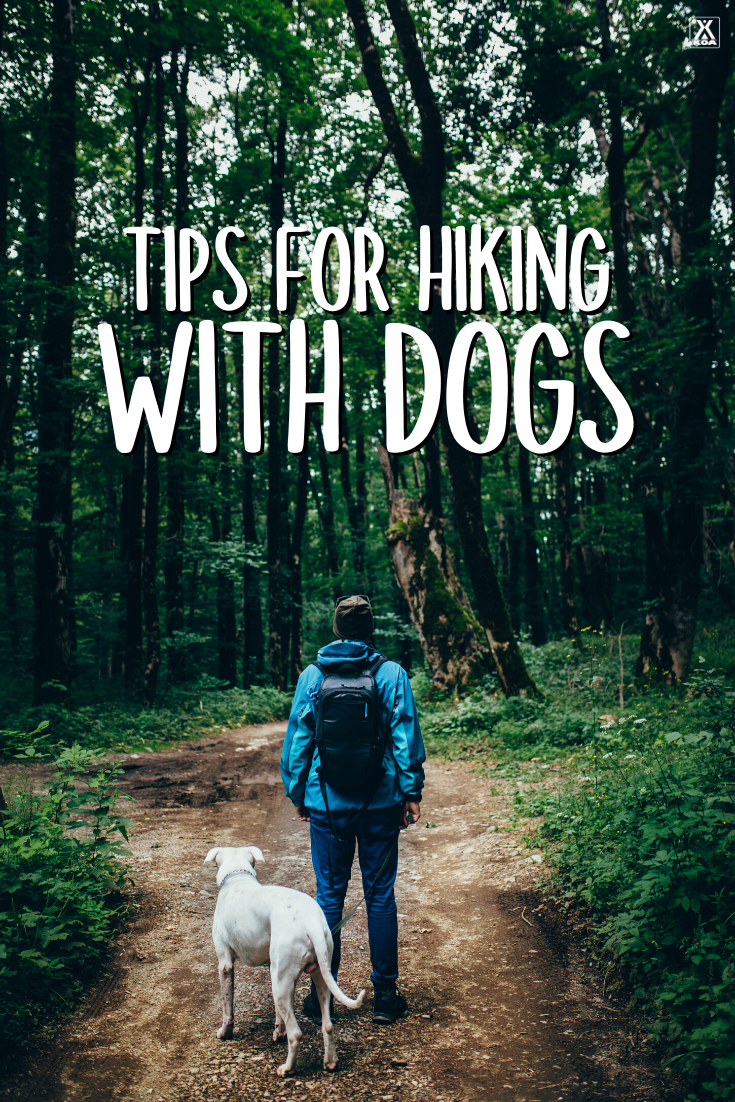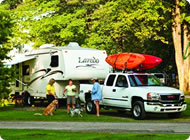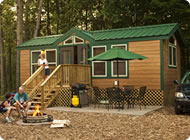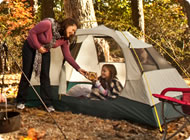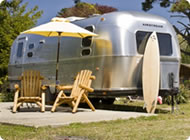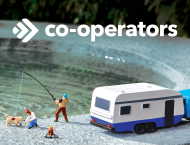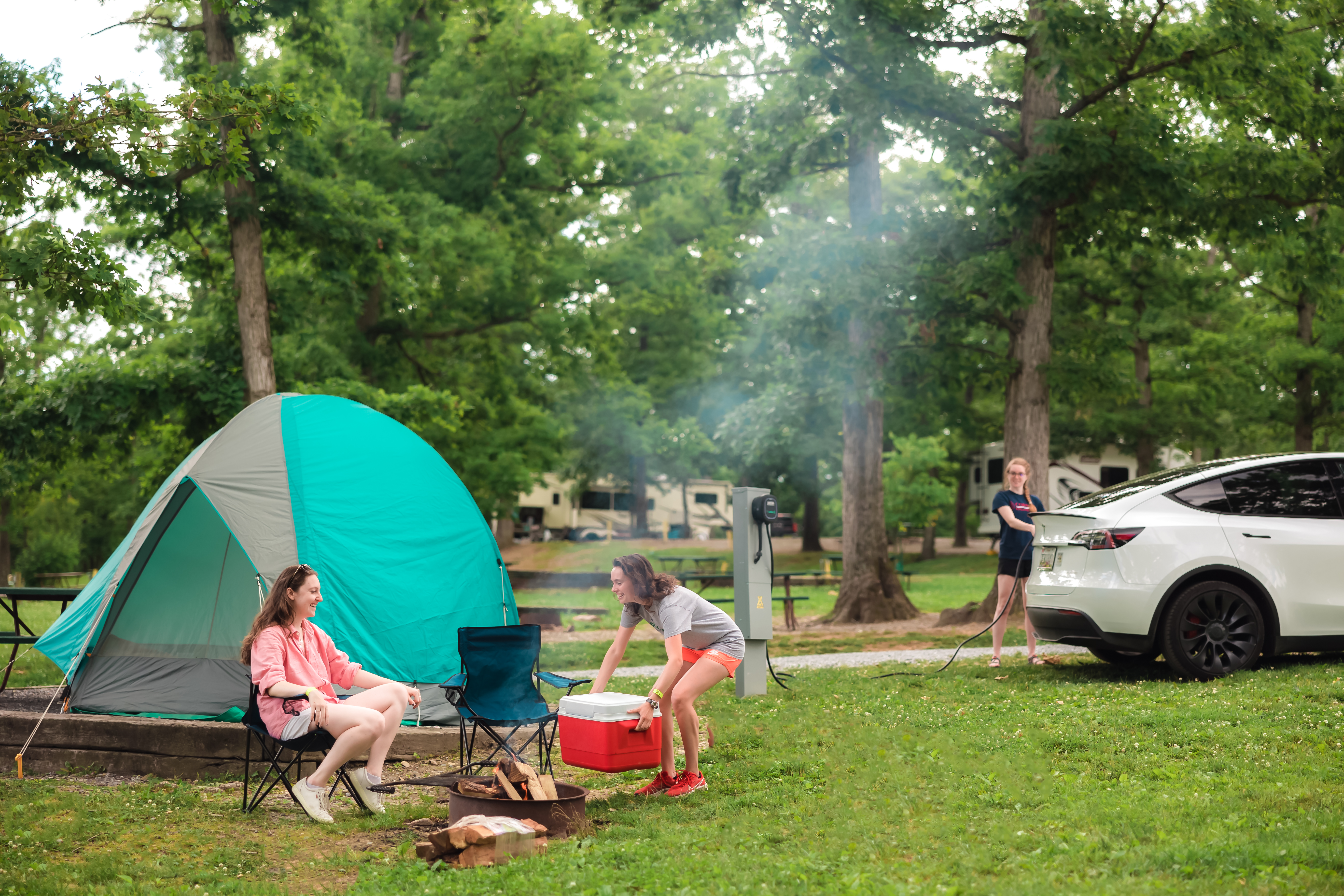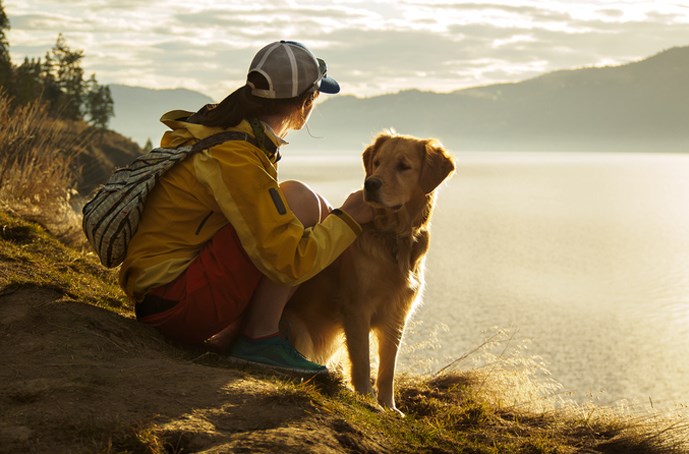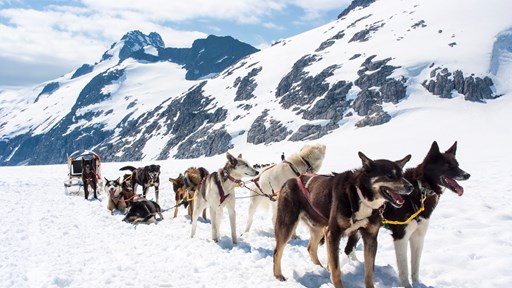Spending quality time outside exploring nature is one of life’s simplest — and greatest — pleasures. You probably already know that hiking is good for your body and your mind — but do you want to know what’s even better? Bringing your dog along with you.
Hiking with your dog is not only beneficial, but it’s a lot of fun. That being said, there are several things to keep in mind when it comes to good dog hiking etiquette and staying safe. Keep reading to learn the benefits of hiking with your dog as well as some basic dog hiking rules.
Benefits of Hiking With Your Dog
Hiking with your dog has numerous benefits to both you and your four-legged friend:
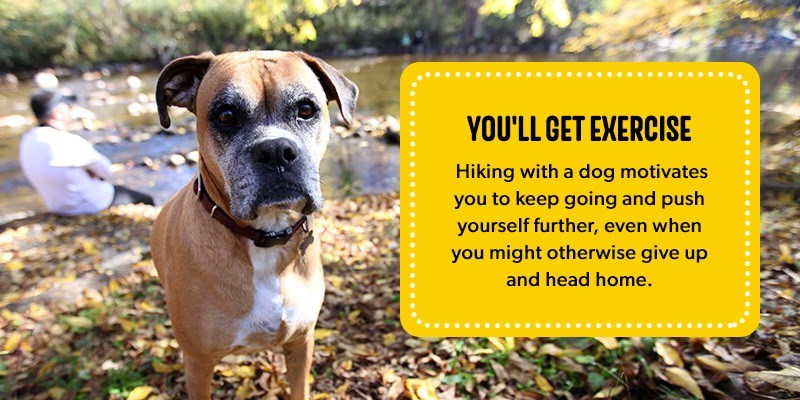
- You’ll get exercise: Hikes are a great way to stay active. Hiking with a dog motivates you to keep going and push yourself further, even when you might otherwise give up and head home.
- Fresh air can reduce stress: Fresh air and sunshine do a lot in the way of stress relief. Considering pets come with their own set of mood-boosting qualities, imagine what both at once could do for you.
- It creates quality time: Spending quality time with your pet is so important. It establishes mutual feelings of trust and companionship. There’s also the bonus of having company while you hike without the need for conversation.
- It’s safer: Dogs have a knack for making you feel safe. Due to their keen senses, they can pick up on sounds, sights and smells quicker and more efficiently than a human can.
Hitting the trails will also benefit your dog:
- Providing an outlet: For your dog, this means being the healthiest version of themselves and having the opportunity to work off some of that pent-up energy. Dogs need new stimulation every once in a while. Hiking keeps your dog from getting too bored and restless in their everyday life. They will enjoy the feeling of new terrain, discovering new scents and challenging themselves against hills and steep paths.
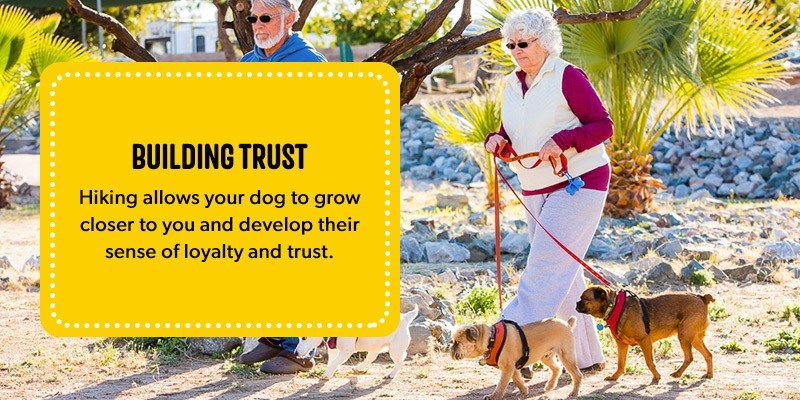
- Building trust: This is especially important when hiking with a new puppy. Hiking allows your dog to grow closer to you and develop their sense of loyalty and trust. Quality time on the trails can also assist when training your dog to obey commands or reduce destructive and dominant habits.
At the end of the day, hiking with your dog is an enjoyable thing to do. Keep in mind, though, that your dog may not feel the same way. While some breeds are predisposed to the outdoor lifestyle, others may not be. Be mindful of your furry friend’s needs and don’t take them out on the trail unless it’s a good fit for both you and them.
Etiquette for Hiking With Your Dog
There are some dog hiking rules and guidelines you should follow to ensure a successful hiking trip. Adhering to proper trail etiquette makes your trip less stressful for you, your dog or anyone you may meet along the way.
1. Prepare Your Dog
Before the big day, make sure your dog is physically ready for the strain of a long hike:
- Talk to your vet: It’s always a good idea to talk to your vet before introducing anything new that could potentially be strenuous into your dog’s lifestyle. This is especially important if your dog has pre-existing health concerns that may affect their time outside. Also, make sure your dog is up-to-date on all shots and vaccines — you never know what you may encounter in the great outdoors.
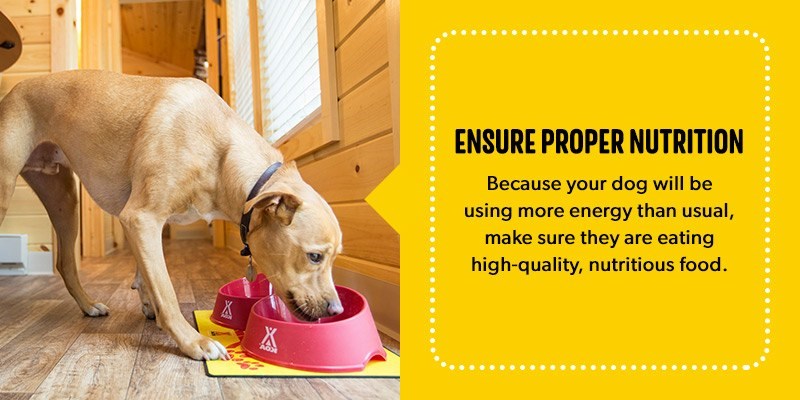
- Ensure proper nutrition: Because your dog will be using more energy than usual, make sure they are eating high-quality, nutritious food. Familiarize yourself with appropriate dog nutrition, as well as the individual diet needs of your dog’s breed. Talk to your vet if you have any questions about your dog’s diet.
- Protect against fleas and ticks: Although it’s extra important when taking your dog outside, protecting your dog against fleas and ticks is always a good idea. Flea infestations can spread to other animals in your home and cause your pet discomfort. Ticks can be dangerous if left unremoved on your dog’s skin. You can find flea and tick mediation at most pet stores, or your dog’s vet can prescribe some on your next visit.
- Groom the paws: Your dog’s paws go through a lot during a day full of walking outdoors. Make sure they are in tip-top shape before you head out. Trim and file their nails to a comfortable length. If you plan to hike in rough conditions, you may want to consider applying a paw protection wax or introducing your dog to booties.
- Dog backpacks: You’ll need to wear a bag full of supplies if you’re going for a hike — but you don’t have to be the only one wearing a pack. There are many types of dog backpacks your dog can wear on the trail. Let your dog carry their waste bags, snacks or treats. Sharing the load will alleviate the weight of your own pack, and your dog will have the feeling of doing a job during your walk. If your dog has never worn a backpack before, work your way up to it before your first hike. Start with an empty pack and see how they do. Then, when you’re ready, begin adding a few light supplies. Be careful not to overpack your dog’s bag.
- Consider clothing your dog: Depending on the temperature outside, you might consider purchasing clothing — such as sweaters or raingear — for your dog to wear as protection against the elements. This is especially true for smaller-breed or short-haired dogs who may have a difficult time keeping warm.
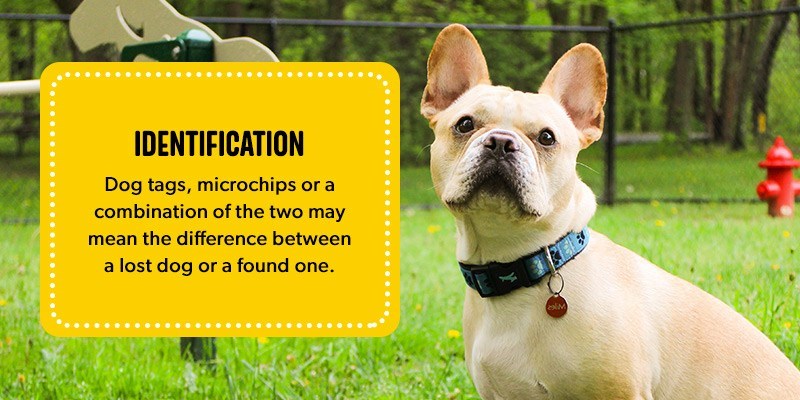
- Identification: Before you take your dog hiking, please make sure your dog is wearing some form of identification. Dog tags, microchips or a combination of the two may mean the difference between a lost dog or a found one.
2. Train Your Dog
A strong, well-behaved dog is the key to a successful hike. Take the time to train your dog physically and mentally before your first hike together:
- Strength and stamina: A daily physical training routine increases your dog’s strength and endurance, meaning they can handle long or challenging hikes better.
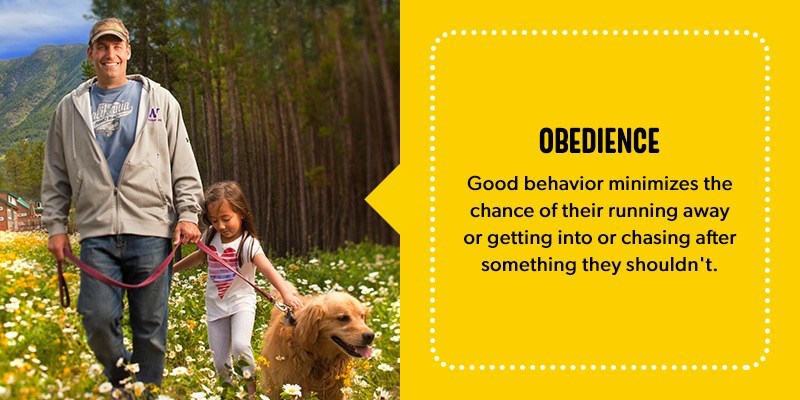
- Obedience: Work on obedience with your dog to prevent any harmful or embarrassing interactions with other dogs or hikers on the trail. An obedient dog is also a safer dog — because they are less likely to pull away from you, good behavior minimizes the chance of their running away or getting into or chasing after something they shouldn’t.
- Consider rattlesnake aversion training: Depending on the part of the country you’re hiking in, you might consider rattlesnake aversion training. Teaching your dog to recognize and avoid dangerous snakes will keep you both safer on the trail.
3. Secure the Essentials
When it comes to backpacking with dogs, there are a few necessities you should always have on hand:
- Water: For each one hour of hiking, it is recommended you carry eight ounces of water per dog. If the temperatures look to be on the warmer side, freeze some water in the bottom of your dog’s bottle the night before, so when it melts, it cools down the rest of the water.
- Collapsible bowl: Bring along a portable collapsible water bowl for your dog.
Food: Bring filling and nutritious snacks for both of you. They will keep your dog motivated and energized along the way. - First aid kits: You need two first aid kits: one for you and one for your four-legged friend. The American Veterinary Medical Association recommends your canine first aid kit contain several items, including documentation of your pet’s medical history.
- Navigation: A map or compass will help you stay on the right path.
- Flashlight: You need some source of light in case your hike lasts a little longer than expected.
- Insect repellent: Spray you and your dog with insect repellent to ward off annoying pests, like mosquitoes. Please note: You should not use human bug spray on your pet. Talk to your vet about dog-friendly insect repellent options.
- Dog waste bags: It is your responsibility to clean up after your pet on the trail.
- Reflective gear: Reflective gear comes in handy if your hike lasts into the night or you are exploring shadier areas.
4. Know Your Dog
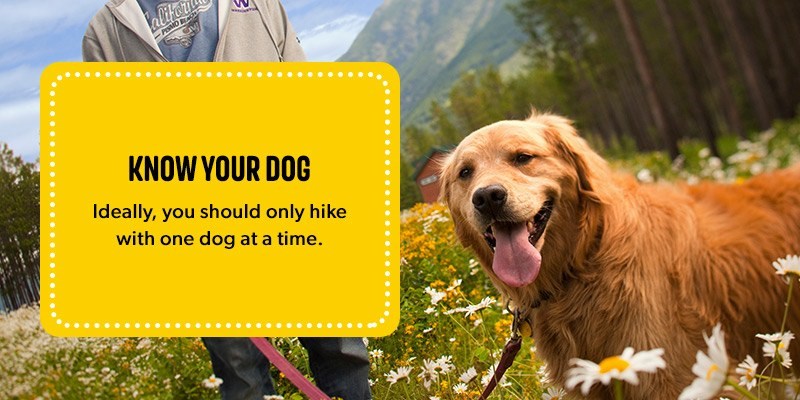
Know your dog’s limits. Ask yourself if they can handle the physical and mental requirements of a day-long hike. How do they act on a leash or around other people and dogs? Keep in mind you may encounter different obstacles on the trail, like horses or bicyclists.
Limit your furry friends. While “the more, the merrier” is usually a great philosophy when it comes to dogs, the same is not true on the hiking trail. Ideally, you should only hike with one dog at a time. If that dog is particularly well-behaved, you may be able to bring along one more. Having fewer dogs to watch means having more control of your hike. Plus, should something bad happen to a dog, it would be a challenge to give it your full attention while keeping an eye on the others. If you want to bring along your entire pack, invite some friends to hike with you. Not only is this a safer option, but you get the bonus of human companionship.
5. Know Your Trail
Research your trail ahead of time. How long is it? How difficult? Learn more about your path before you go.
Avoid hiking in any areas that allow hunting or animal trapping. Should you see signs posted that you are in such an area, respect those for the safety of all involved. Hiking in national or state parks is a great way to be sure that your path will be free of these dangers.
6. Reinforce Good Manners
Good manners are crucial in maintaining proper trail etiquette. Show off your dog’s best behavior by:
- Keeping your dog leashed: Hiking with dogs off-leash is usually a bad idea. Most trails and public parks don’t allow it. Keeping your dog on a leash keeps your dog safe. Retractable leashes are generally not encouraged. Stick to a strong, traditional leash no longer than six feet.
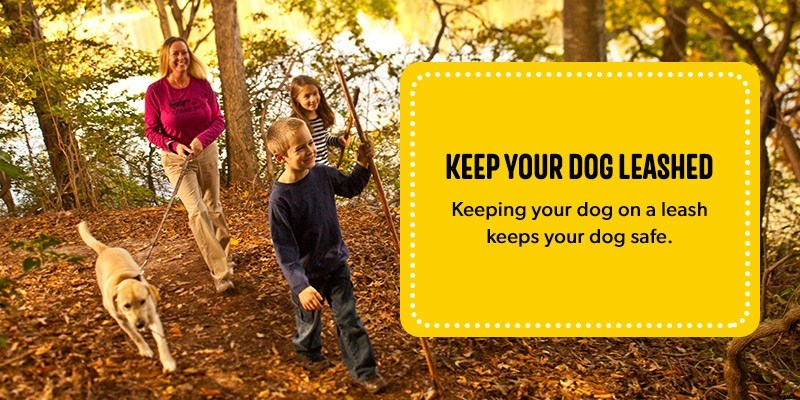
- Controlling your dog: Do not let your dog lunge or excessively bark at others on the trail. Doing so could trigger other dogs to react negatively. A quiet, well-behaved dog means a peaceful trail for all.
- Yielding the right of way: If hiking with a dog, trail etiquette dictates that you yield right of way to other hikers and bikers.
7. Keep a Close Eye On Your Dog
For the most part, you shouldn’t take your eyes off your dog during a hike. It only takes a few seconds for your dog to sniff out something that could prove dangerous or even life-threatening:
- Watch them: Nature is full of beautiful plants, flowers and berries. Unfortunately, many of them can be toxic if consumed by pets. The American Society for the Prevention of Cruelty to Animals (ASPCA) reports over 400 species of poisonous plants, many of which could be found along your favorite trail.
- Keep them away from groundwater: Make sure your dog stays hydrated, but do not let them drink from groundwater. Puddles, ponds and streams can be full of bacteria or parasites that can make your dog sick. Your dog doesn’t understand this — all they know is that there is water and they are thirsty. That’s why it’s so important to watch them at all times. Combat thirst with fresh, cool water from your backpack or theirs.
- Be aware of your surroundings: Stay vigilant of the world around you. Bee nests, ant mounds, cliffs with steep drop-offs and other animals can all pose a threat to you and your dog.
- Know the signs of overheating: Overheated or dehydrated dogs may excessively pant, act confused, vomit or even collapse. If this happens, move your dog to a cool area immediately. Guide your dog to drink and wet them with water. Once your dog has cooled off, it’s time to head back home and call your vet.
- Know when your dog has had enough: Despite what your dog may want you to think, they do not possess an endless supply of energy. If your dog keeps lying down in the middle of your walking path or stops walking without reason, they may need to head home for an energizing nap.
8. Leave the Trail How You Found It
This is good trail etiquette to keep in mind each time you take a hike, whether with your dog or on your own. Leave your surroundings as undisturbed as you found them. Stick to the designated trail, rather than forging your own. Do not break or tear down bushes, vines, branches or other plants.
Be sure not to leave any trash on the ground. No trace hiking also includes picking up and disposing of your pet’s waste, so be sure to bring an adequate supply of poop bags!
9. Take Regular Breaks
Take regular, frequent breaks throughout your hike. This helps prevent the possibility of overheating and overexertion, and gives your dog’s sensitive paw pads a rest. Breaks are also the perfect opportunity to refuel and re-hydrate.
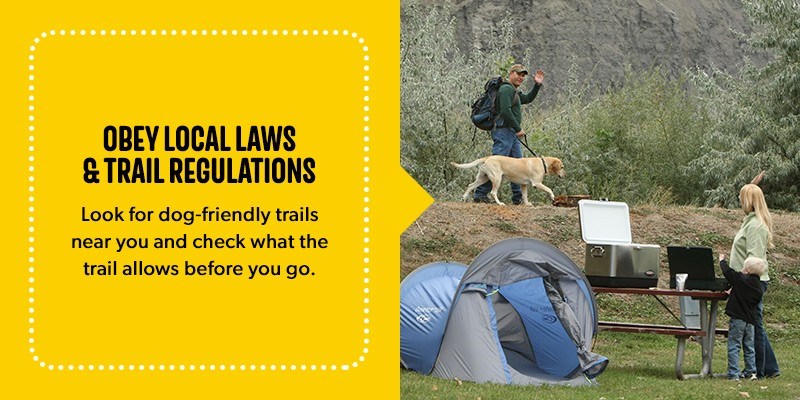
10. Obey Local Laws and Trail Regulations
No matter how well-behaved, your dog will not be allowed to hike every trail. Many public and private trails do not allow dogs, even when leashed. Look for dog-friendly trails near you and check what the trail allows before you go. You can refer to the National Park Service website to see which parts of their parks do not allow pets.
11. Have an Emergency Plan
Even when you follow the rules and are prepared for your hike, always have an emergency plan in place in case something should happen to you or your dog while hiking. This may include knowing how to remove splinters or treat snake bites. Keep in mind, one of the most important things you can do if your dog becomes injured on the trail is to head back and contact your vet immediately.
Develop a Routine
Now that you’ve learned some new tips for hiking with dogs, it’s time to put them into action. Schedule regular hikes with your dog. It continue to benefit you both and it’s something your dog will start looking forward to. The more hikes you implement in your routine, the more comfortable they will become for your dog. Work your way up to more challenging trails by starting slow and practicing regularly.
Other Tips for Hiking With Your Dog
Now that you’re well-versed in trail etiquette, there are a few more tips for hiking with dogs that are sure to make your experience a memorable one:
- Slow down: Sure, hikes are an excellent work out for you and your dog — but they don’t always need to be challenging and fast-paced. Take the time to slow down and appreciate the peace of being outdoors with your best friend.
- Take pictures: You and your dog have worked hard to get to this moment. Don’t forget to take plenty of pictures! After all, these are the moments with your dog you will cherish for years to come.
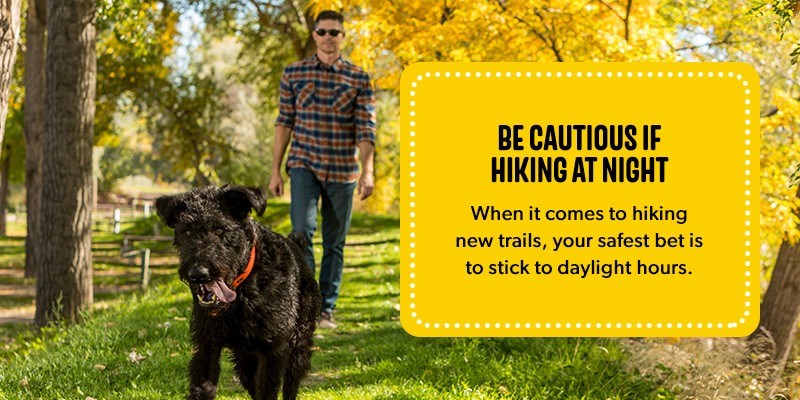
- Be cautious if hiking at night: When it comes to hiking new trails, your safest bet is to stick to daylight hours. If you do decide to hike at night, don’t forget to dress your dog in reflective gear. Should they come off-leash or get lost, this will help you more easily find them.
- Don’t be afraid of off-season hiking: Hiking isn’t just for the spring and summer! Off-season hiking is a great way to avoid crowded trails and to burn off some of those indulgent holiday meals. While cooler weather is often more comfortable to hike in, there are also some new factors you will need to consider, such as booties and a jacket for your dog.
- Have a post-hike check-up: After your hike is through, be sure to conduct a post-hike check-up on your furry friend. Check them thoroughly for fleas and ticks, small cuts or snagged nails. Depending on how the hike went, you may also need to bathe your dog.
- Let your dog recover: Provide your dog with plenty of nutritious food after the hike. This will help their bodies recover completely after a hard day’s work. If they were extra well-behaved, they probably wouldn’t object to a special treat.
Make a KOA Campground Your Home Base
Don’t let the fun end when your hike does. Consider making KOA your home base for your next hiking adventure. KOA offers several different camping options, including Tent Sites, RV Sites and cabins. Some KOA Campgrounds even offer more unique lodging options, like teepees or Airstreams.
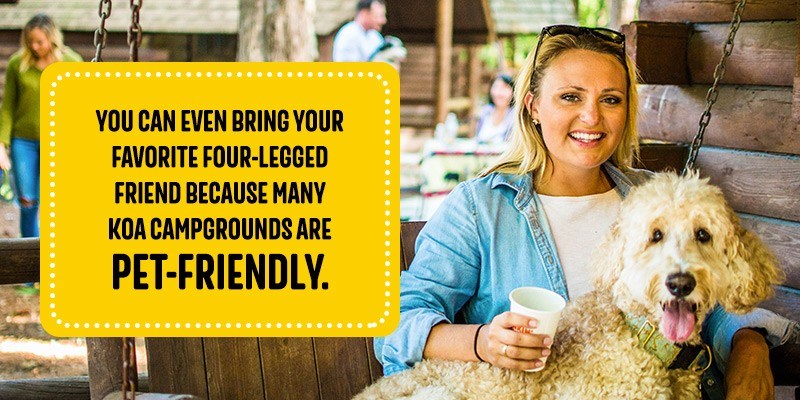
You can even bring your favorite four-legged friend because many KOA Campgrounds are pet-friendly, although some may have restrictions in place. Please call ahead to the KOA Campground that you plan to stay at to learn more about their pet policy and dog-friendly camping options.
Depending on which KOA Campground you camp at, your dog may even have access to a special pet area of a KOA Campground where your dog can roam off-leash inside a fenced-in area while you watch comfortably from nearby. These dog parks offer cleanup stations and clean drinking water. Sound like something your dog would love? Give the KOA you’re considering a call and ask to learn more about their pet-friendly amenities or look online under specific campsite details.
